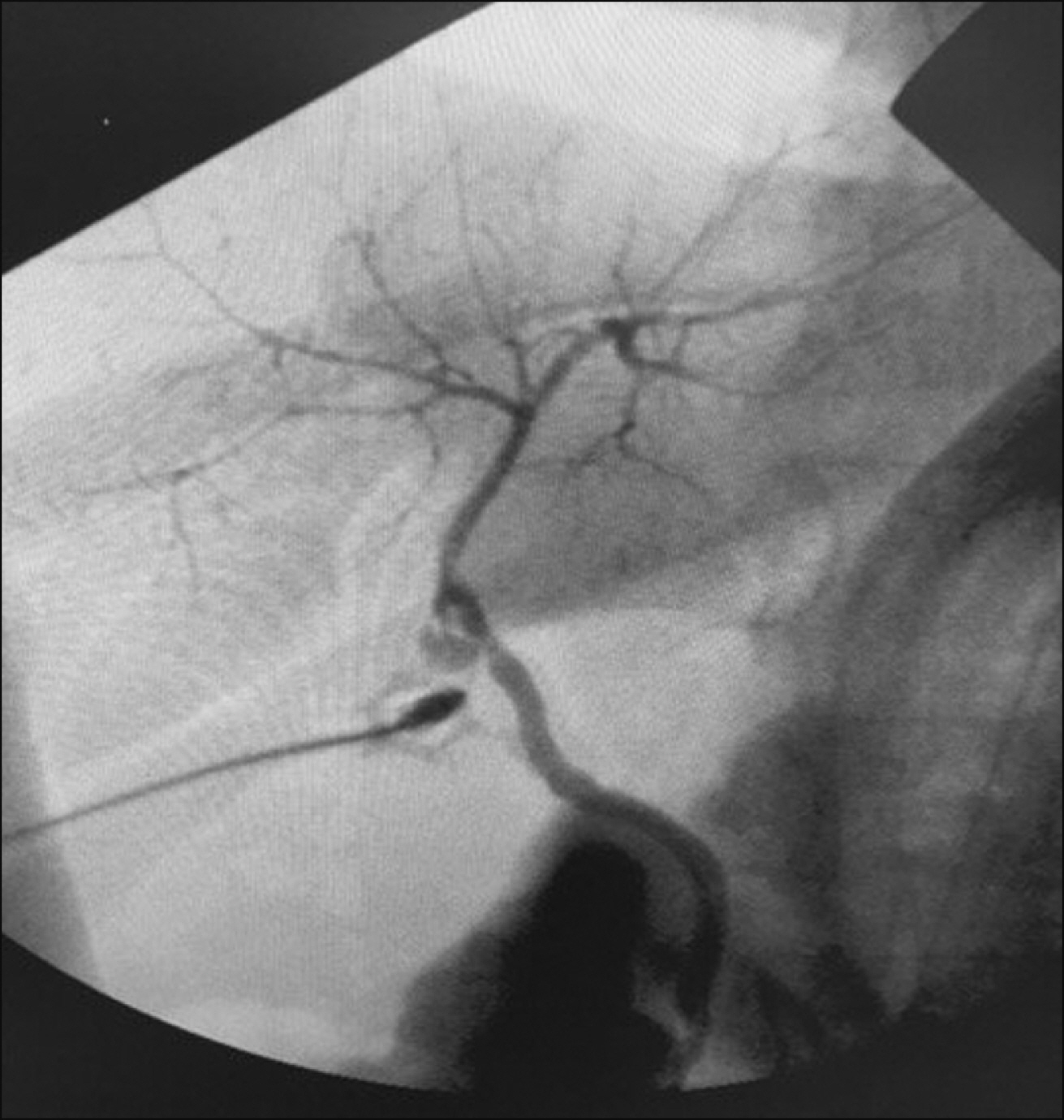Ann Hepatobiliary Pancreat Surg.
2020 Nov;24(4):513-517. 10.14701/ahbps.2020.24.4.513.
Cystic duct patch closure of remnant bile duct in living donor hepatectomy when primary closure is difficult: An easy solution
- Affiliations
-
- 1Centre for Liver and Biliary Sciences, Max Super Speciality Hospital, Saket, New Delhi, India
- KMID: 2508861
- DOI: http://doi.org/10.14701/ahbps.2020.24.4.513
Abstract
- Backgrounds/Aims
In living donor hepatectomy, hepatic duct division is a crucial step and often a technical challenge, with the aim of obtaining a good hepatic duct for anastomosis in the recipient and an adequate stump in the donor for closure. Very rarely, after duct division, the remaining stump may not be adequate for primary closure. In such a difficult situation, the options would be either to close stump transversely or a Roux-en-Y Hepaticojejunostomy.
Methods
We describe a novel surgical technique of “Cystic duct patch repair”, utilizing the available local tissues for closure of bile duct wall.
Results
Two year follow up of this technique showed satisfactory results with no evidence of stricture and normal liver functions.
Conclusions
In living donor hepatectomy, “Cystic duct patch closure” may be used if the post closure cholangiogram is not satisfactory. Although the best method is prevention by ensuring a stump for closure, very rarely this error can occur and can be sorted by cystic duct patch repair.
Figure
Reference
-
1. Taketomi A, Morita K, Toshima T, Takeishi K, Kayashima H, Ninomiya M, et al. 2010; Living donor hepatectomies with procedures to prevent biliary complications. J Am Coll Surg. 211:456–464. DOI: 10.1016/j.jamcollsurg.2010.04.018. PMID: 20822745.
Article2. Hwang S, Lee SG, Lee YJ, Sung KB, Park KM, Kim KH, et al. 2006; Lessons learned from 1,000 living donor liver transplantations in a single center: how to make living donations safe. Liver Transpl. 12:920–927. DOI: 10.1002/lt.20734. PMID: 16721780.
Article3. Stewart L, Way LW. 1995; Bile duct injuries during laparoscopic cholecystectomy. Factors that influence the results of treatment. Arch Surg. 130:1123–1128. discussion 1129DOI: 10.1001/archsurg.1995.01430100101019. PMID: 7575127.4. Choi JW, Kim TK, Kim KW, Kim AY, Kim PN, Ha HK, et al. 2003; Anatomic variation in intrahepatic bile ducts: an analysis of intraoperative cholangiograms in 300 consecutive donors for living donor liver transplantation. Korean J Radiol. 4:85–90. DOI: 10.3348/kjr.2003.4.2.85. PMID: 12845303. PMCID: PMC2698075.
Article5. Shaji Mathew J, Manikandan K, Santosh Kumar KY, Binoj ST, Balakrishnan D, Gopalakrishnan U, et al. 2018; Biliary complications among live donors following live donor liver transplantation. Surgeon. 16:214–219. DOI: 10.1016/j.surge.2017.08.005. PMID: 29056477.
Article6. Pamecha V, Bharathy KG, Kumar S, Sasturkar SV, Sinha PK. 2016; Biliary complications after living donor hepatectomy: a first report from India. Liver Transpl. 22:607–614. DOI: 10.1002/lt.24374. PMID: 26610270.
Article7. Ghobrial RM, Freise CE, Trotter JF, Tong L, Ojo AO, Fair JH, et al. 2008; Donor morbidity after living donation for liver transplantation. Gastroenterology. 135:468–476. DOI: 10.1053/j.gastro.2008.04.018. PMID: 18505689. PMCID: PMC3731061.
Article8. Lo CM. 2003; Complications and long-term outcome of living liver donors: a survey of 1,508 cases in five Asian centers. Transplantation. 75(3 Suppl):S12–S15. DOI: 10.1097/01.TP.0000046534.45645.47. PMID: 12589131.
Article9. Wang SF, Huang ZY, Chen XP. 2011; Biliary complications after living donor liver transplantation. Liver Transpl. 17:1127–1136. DOI: 10.1002/lt.22381. PMID: 21761548.
Article10. Yuan Y, Gotoh M. 2010; Biliary complications in living liver donors. Surg Today. 40:411–417. DOI: 10.1007/s00595-009-4143-1. PMID: 20425542.
Article11. Takatsuki M, Eguchi S, Tokai H, Hidaka M, Soyama A, Tajima Y, et al. 2006; A secured technique for bile duct division during living donor right hepatectomy. Liver Transpl. 12:1435–1436. DOI: 10.1002/lt.20877. PMID: 16933227.
Article12. Testa G, Malagò M, Porubsky M, Marinov M, Sankary H, Oberholzer J, et al. 2006; Hilar early division of the hepatic duct in living donor right hepatectomy: the probe-and-clamp technique. Liver Transpl. 12:1337–1341. DOI: 10.1002/lt.20821. PMID: 16933234.
Article
- Full Text Links
- Actions
-
Cited
- CITED
-
- Close
- Share
- Similar articles
-
- The Role of Bile Duct Probe for Bile Duct Division during Donor Right Hemihepatectomy
- Surgical tips of duct-to-duct bile duct anastomosis in unusual situations in living donor liver transplantation
- Surgical Clip Moved into the Extrahepatic Bile Duct after Laparoscopic Hepatectomy
- Single Center Experience of Biliary Reconstruction in Living Donor Liver Transplantation: Duct-to-Duct Anastomosis
- Primary common bile duct closure and antegrade stent insertion in choledocholithiasis patients






